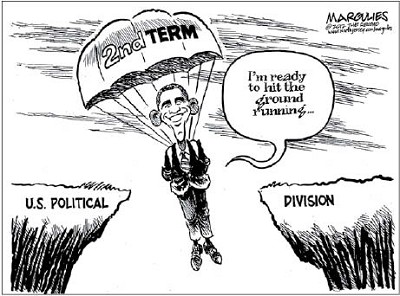President Obama And Executive Orders
Published 2:35 pm Thursday, January 31, 2013
Executive orders have a long history in our nation, and often a crucial role to play. President Truman used an executive order to integrate our armed forces and President Eisenhower issued an executive order directing U.S. troops to help desegregate a high school in Little Rock, Arkansas.
Republican and Democratic presidents have used executive orders, so it is a little surprising, though perhaps not, to hear the over the top reaction in some quarters to President Obama's use of executive orders related to gun safety last week, as if he was banning assault weapons via executive order. He is not. Congress will decide the fate of assault weapons, as it should, through the legislative process.
President Washington issued what was effectively the first executive order, though they weren't called that at the time. The State Department began numbering executive orders in 1907, starting with one by President Lincoln in 1862. Guidelines for executive orders were established by the Supreme Court in 1952-executive orders are not meant to make laws but to further or clarify an existing law.
Executive orders have been praised and criticized through the years, criticized, generally by the political party opposing the president, as being used to make laws.
The criticism of President Obama seems par for the partisan course. Interestingly, according to research published by New York Magazine, President Obama has issued fewer executive orders than any president in more than 100 years, so he is hardly the anti-constitutional tyrant king some make him out to be. One must go all the way back to Grover Cleveland, in fact, to find a president who used executive orders less than President Obama.
President Obama's executive orders regarding gun safety last week dealt with such things as background checks-six of the 23 were related to background checks-providing incentives for schools to hire resource officers, and mental health issues, for example.
None of these 23 executive orders seems intended to, or likely to, topple the 2nd Amendment:
1. Issue a Presidential Memorandum to require federal agencies to make relevant data available to the federal background-check system.
2. Address unnecessary legal barriers, particularly relating to the Health Insurance Portability and Accountability Act, that may prevent states from making information available to the background-check system.
3. Improve incentives for states to share information with the background check system.
4. Direct the attorney general to review categories of individuals prohibited from having a gun to make sure dangerous people are not slipping through the cracks.
5. Propose rulemaking to give law enforcement the ability to run a full background check on an individual before returning a seized gun.
6. Publish a letter from the Bureau of Alcohol, Tobacco and Firearms and Explosives (ATF) to federally licensed gun dealers providing guidance on how to run background checks for private sellers.
7. Launch a national safe and responsible gun ownership campaign.
8. Review safety standards for gun locks and gun safes (Consumer Product Safety Commission).
9. Issue a Presidential Memorandum to require federal law enforcement to trace guns recovered in criminal investigations.
10. Release a Department of Justice report analyzing information on lost and stolen guns and make it widely available to law enforcement.
11. Nominate an ATF director.
12. Provide law enforcement, first responders, and school officials with proper training for active shooter situations.
13. Maximize enforcement efforts to prevent gun violence and prosecute gun crime.
14. Issue a Presidential Memorandum directing the Centers for Disease Control to research the causes and prevention of gun violence.
15. Direct the attorney general to issue a report on the availability and most effective use of new gun-safety technologies and challenge the private sector to develop innovative technologies.
16. Clarify that the Affordable Care Act does not prohibit doctors asking their patients about guns in their homes.
17. Release a letter to healthcare providers clarifying that no federal law prohibits them from reporting threats of violence to law enforcement authorities.
18. Provide incentives for schools to hire school resource officers.
19. Develop model emergency-response plans for schools, houses of worship and institutions of higher education.
20. Release a letter to state health officials clarifying the scope of mental health services that Medicaid plans must cover.
21. Finalize regulations clarifying essential health benefits and parity requirements within Affordable Care Act exchanges.
22. Commit to finalizing mental-health parity regulations.
23. Launch a national dialogue led by Secretaries Sebelius and Duncan on mental health.
Those are hardly the executive orders of King George III.
-JKW-






